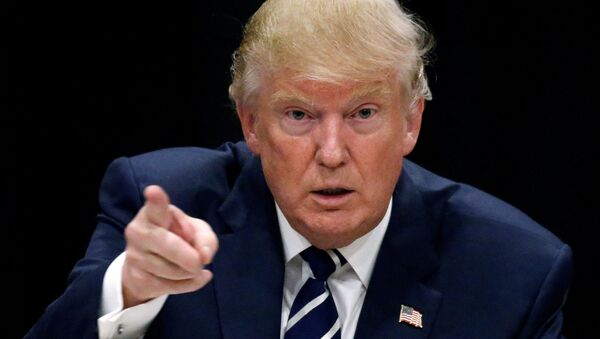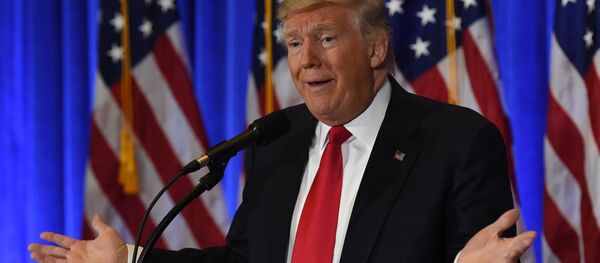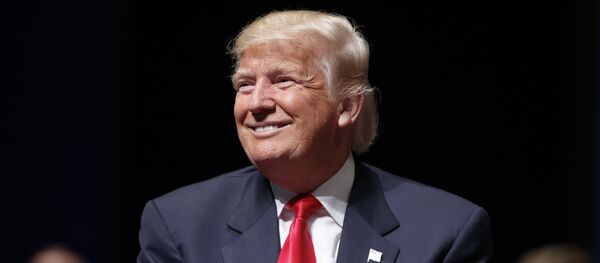Kristian Rouz – Shortly after having been sworn in as US President, Donald Trump has taken several measures aimed at ensuring a quicker expansion of the US GDP within the first quarter of 2017, as the past year was largely a stagnant disappointment for many US industries.
As the new president receives the first signs of the health of the American economy, his proposed reform measures promise to be as drastic, momentous, and prominent on the global scale as the late Soviet restructuring experience.
Trump announced of his administration's plans for a new economic policy on Friday. One of his first steps will be to withdrawal from the Trans-Pacific Partnership (TPP) free trade project in an effort to protect American labor. Given the threat of competition from Australian and Kiwi agriculture and Japanese and Korean manufacturing, the TPP’s potential effects hardly correspond to the aspirations of ‘middle America’ that got Trump elected.
"For too long, Americans have been forced to accept trade deals that put the interests of insiders and the Washington elite over the hard-working men and women of this country," the White House statement read. "As a result, blue-collar towns and cities have watched their factories close and good-paying jobs move overseas, while Americans face a mounting trade deficit and a devastated manufacturing base."
The Trump administration also said they are intending to renegotiate the NAFTA pact the US concluded with Mexico and Canada in 1994, which has been branded harmful to US manufacturing.
Indeed, after at least two decades of America’s globalist project, the US economy finds itself experiencing weak economic growth, which is particularly alarming as the current 10-year economic cycle is drawing to its close.
Having staggered at around 1 percent year-on-year annual growth throughout the first half of the past year, the GDP expansion is likely to have slowed to 2.2 percent for the entire year of 2016 compared to earlier anticipations of over 3 percent. US international trade is in negative territory, while business investment is dismal, corporate profits have declined for six consecutive quarters, and fears of across-the-board disinvestment still linger.
Trump plans to go about ‘Rebuilding’ America, which is mired in public mismanagement and excessive government intervention in the economy; politics are put before the interest of the nation’s productive forces. This presents a set of challenges very similar to those that Mikhail Gorbachev was facing over 30 years ago.
Trump's administration is set to deliver its next policy steps shortly. These include the promised tax cuts and increased infrastructure investment, the two parts of the fiscal stimulus package which is stirring hopes that the US economy will gain momentum this year.
"(The US economy is) a bit of a step down, but is still very healthy and really should support expectations for further growth and expansion," Laura Rosner of BNP Paribas said.
Trade protectionism, advocated by Trump, is likely to entail increases in import prices, pushing US inflation beyond the Federal Reserve’s targeted 2 percent, in a scenario resembling the post-Brexit UK. This might result in a drag on domestic consumption, which would be the main challenge for the Trump administration to deal with. That means that the proposed fiscal stimulus must be designed to support the gains in the real disposable incomes of American workers.
Even though the US economy is still expanding, albeit at a slower pace, the structural inefficiency and the lack of flexibility in the nation’s labor market have resulted in an actual contraction in many sectors, particularly those deprived of federal subsidies. The US private sector and Main Street economy have barely felt any improvement since the Great Recession of 2008-2009, with many commercial properties idling, and manufacturing facilities closing or balancing on the brink of survival – all despite ultra-affordable credit conditions and generally optimistic consumers.
"The challenges that remain are the ones that are harder to fix," Jed Kolko of Indeed-com said.
The excessive regulation and prohibitively high tax rates are just part of the problem. While the current US macroeconomic model champions redistribution over the generation of wealth, there is less and less that's left to redistribute. Therefore, the main focus of the Trump administration is to make the US economy productive again.
With Perestroika having made its unlikely comeback on the other side of the Atlantic (or Pacific?), the urgent necessity for an economic readjustment and the move to put the nation’s productive capacity before political or ideological considerations seem to be the only real link connecting Trump to Russia after all.




